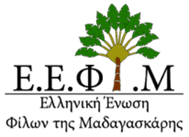
La faim guette 1.9 million de Malgaches
Nouveau triste classement pour Madagascar. Dans son dernier rapport, le Programme Alimentaire Mondial (PAM) place la Grande ile à la deuxième position des pays les plus touchés par la faim. D’après les estimations de l’organisme, 1.9 million de Malgaches sont dans une situation jugée « alarmante ». Seul le Malawi fait pire avec 2.8 millions de personnes menacées. Le Zimbabwe complète ce podium affligeant avec 1.5 million.
Selon le PAM, au total 14 millions de personnes sont menacées par la faim sur le continent. Cette situation est essentiellement due au phénomène El Nino qui perturbe les conditions météorologiques avec des sècheresses intenses dans certaines régions et de graves inondations dans d’autres.
C’est justement ce qui se passe actuellement à Madagascar. Alors que le nord fait face à une pluviométrie anormalement élevée, le sud est totalement à sec. C’est justement dans le sud que la situation est la plus alarmante. Le chef de la région Anosy a d’ores et déjà déclaré que le Kere (famine) est en train de sévir.
Pour lutter contre l’insécurité alimentaire dans la Grande ile, la Commission de l’Océan Indien prévoit d’installer à Antananarivo une « Unité régionale de sécurité alimentaire et nutritionnelle ». Il s’agit d’une unité dont le rôle sera non seulement de recevoir l’appui technique et logistique de la FAO, mais également de coordonner les initiatives des autres bailleurs.
HTTP://WWW.AGENCEPRESSE-OI.COM/LA-FAIM-GUETTE-1-9-MILLION-DE-MALGACHES/




